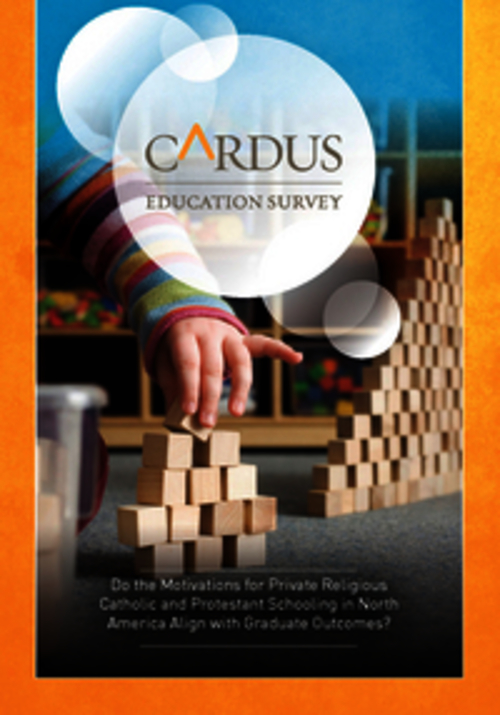Peter Stockland January 3, 2012The launch of the office of religious freedom is being met with criticism because of a seeming lack of diversity. Michael Coren and guest Peter Stockland take a closer look.

Religious Freedom Fight
January 3, 2012

Unions and the Common Good
2.8%: That is the difference between the rate of union membership and the rate of unemployment in the US. Union membership in the US is so low that many Americans aren't even familiar with unions. What are they? What do they actually do? Unions are institutions in which workers organize together to bargain collectively with their employers. Instead of employees being bound by individual employment contracts, unions bargain on behalf of all the workers in a workplace. These contracts are typically called collective bargaining agreements, and they set wage levels, working conditions, and provide structures for workplace discipline, how workers are promoted, fired or laid off, as well as structures for resolving workplace grievances. Typically unions take two forms. They will organize workers within a given craft (for instance, electricians, teachers or basketball players), or they will organize workers in an entire workplace of different trades (for instance, all employees, of all trades, in a factory). Unions traditionally bargain on behalf of their own membership, but they also work to establish minimum labor requirements for all workers through law. Minimum wage laws, overtime provisions, parental leaves, mandatory workplace insurance schemes are just a few examples of things unions have won through their lobbying efforts over time. While unions have a long and storied history in the United States, today, as the numbers show, unions are in deep trouble. You wouldn't know that unions were in such trouble by following the news, though. This year is an especially active news year for unions—first the death match between public service unions in Wisconsin and now the high-stakes drama of the NBA lockout. This coverage, combined with the regular, and massive, contributions of unions to political campaigns suggest that unions are fit and healthy. But don't be deceived. The news coverage and political contributions are nothing more than rouge on the cheeks of a very sick union movement. Unions today are a sallow and pale reflection their past selves.  Why is this so, and why should we care? And, if we should care, what is to be done? You typically hear two diagnoses. The narrative you'll hear from the union movements typically involves a marriage of big-business, conservative politicians, free-trade and trade and labor policies which emphasize movement of capital, and a business mindset which views workers as equivalent to coffee beans—a commodity to be bought at market prices. On the other side you'll hear stories about how business developed in such a way as to meet the needs of workers while unions focused on protecting their own institutional interests while costing jobs, their members' money and, often, their members' freedom. Each side will point to symptoms which confirm their diagnosis. Unions point to labor policies which undermine trade union rights, or trade policies which have seen American jobs bleed to places like Mexico, China or anywhere else where labor is cheap and unprotected as cause for their decline. Business will point to corruption of union officials, an unwillingness to consider productivity in bargaining and progressive HR policies within business as proof that the need for unions is over. Sadly, this is about as far as the discussion goes. People who support unions—and I should note at this point that I am very much one of them—and those who are opposed to them, spend more time disagreeing with one another, and more effort and money attempting to trump the other side through politics, than they do in earnestly, and in good faith, wrestling with three profound questions which lie at the heart of the great divide between the pro and anti-union side. This failure has led to both a decline of trade unionism and a bastardization of business. These questions are as follows: What is work, and how does it relate to what it means to be human? What is the nature and proper function of the business corporation, and what is its relationship to individuals and society? What is the nature and proper function of the trade union?In my work as a trade unionist—at the local, national and international levels—I found that the answers given by both business and trade union advocates to the first question were eerily similar. Too often the discussion began and ended with economic answers. Too often, business doesn't spend the time asking itself those questions. Sadly, trade unions—whose role it should be to ensure that business is mindful of these questions—spend very little time on a dialog between those with capital, and those who grow capital through their labor, about the deep, even religious, questions behind the daily grind of work. Instead, they limit themselves almost entirely to the fight over dollars and cents. There was a time when these questions were discussed, and were highly influential in shaping world history for the better. Christian trade unionists such as Bill Doherty, organizations such as the World Confederation of Labor (a global, Christian, trade union body) and great people such as Abraham Kuyper, Leo XIII, Martin Luther King Jr., Dorothy Day, John Paul II and Lech Walesa have all provided both intellectual and practical responses to these questions. Each was able to afford a proper place to business while challenging the underlying and harmful assumptions that work is simply an economic activity and that workers exist as individual cogs in a morally neutral economy. They recognized, in their words and in their actions, the fundamentally human and social nature of work.  Today's labor movement would do well to revisit some of these thinkers and actors and to sift through their work to find innovations which would reorient and reinvigorate the union movement. It might be a smaller movement, but it would be better.Â
December 15, 2011

Pennings: City hall shows willingness to nurture faith
You will never win by fighting city hall, or so the saying goes. Sometimes, you don't have to. The city is not only listening regarding the Cardus Calgary City Soul report and recommendations released in October—it is acting on them and we anticipate a public process early in 2012 that will fully engage and recognize the vital role that faith communities play in the formation of our civic esthetic. To recap, Calgary approved its new Centre City Plan in 2007. It envisions a city centre in which 40,000 or more additional residents will contribute to a vertical, high density, vibrant core of the city. Yet, in spite of the reality that every week enough Calgarians attend places of worship to fill the Saddledome 20 times over; that a significant proportion of the core services in our city rely on faith communities, and that places of worship continue to perform essential roles in the lives of so many of us at the defining moments of our lives ("hatch 'em, match 'em and dispatch 'em"), the document was silent on institutions that sustain and cultivate people's most deeply held beliefs. The oversight in the city plan was not part of some grand anti-religious conspiracy. The public consultation notices went out and representatives of faith institutions had the opportunity to participate. Some did. Others were intimidated about municipal planning processes and the technical jargon that so often accompanies it. Some were not sure that stepping out into the public arena wearing a faith label was the wisest thing to do; religion had become unfashionable. On the city side, the faith dimension is easily overlooked. It tends to be considered something private rather than an integral part of the cultural conversation. Fifty years ago—even 30—when Calgary had a more homogeneous religious profile, it was easier to know who to talk to and how to frame your language. Today's multicultural and multi-faith makeup challenges us all, in that we realize how little we know and understand about each other. Throw in the increasing number oblivious to the idea that there is something more to the world beyond that which we can see, and the whole discussion is easy to avoid, particularly if you are the city staffer tasked with trying to find appropriate legal language. Cardus, a think-tank engaged in the study of social architecture, and our senior fellow, Peter Menzies, found the vocabulary to bridge this gap and the social significance of this conversation. Our recent report, Calgary City Soul—Phase II, released in October, included concrete recommendations for amending the city plan to recognize the ongoing importance of faith and faith institutions. Beyond strategic statements of intent, this needs to translate into interpretation of bylaws, parking regulations and other practical planning tools so that churches, temples, mosques and synagogues can thrive where people live and not be forced to live in sterile environments on the city's physical and metaphorical margins. Since the release of our report, we have heard from several faith groups with municipal issues that go beyond the Centre City Plan. The particulars are not the point: but it is clear the discussion is expanding and we will continue to follow it and facilitate as needed. And we have also heard from and met with city officials who have embraced the issue. The issue has clearly been acknowledged as real—vital, even—and our sense is that there is a genuine desire to engage in ongoing dialogue with faith communities. We understand a public process will be initiated as early as February 2012 that will get faith communities engage in the hard grind of how best to amend bylaws and regulations to meet their needs. The days of a monolithic religious culture, if it ever existed, are certainly over. Recognition needs to be made that we live in a pluralistic city where people of many different faith traditions need to live in harmony. That will not be achieved by being silent about faith and its contribution in terms of architecture, the arts, social services and as incubators of social virtue. It was never our intent to "fight" city hall. But the city we live in and that shapes our shared public spirit 20 years from now, is the city you plan for today—no matter how hard the grinding of bureaucratic language can be. Faith has always been a part of Calgary's civic history and esthetic. The path appears clear for it to continue that tradition into the future.
December 10, 2011

Cardus Education Survey aims to ignite stimulating conversations
December 5, 2011

A common faith… and perhaps craziness in common
My fellow Catholic Register columnist Peter Stockland and I may just be crazy. After writing thousands of columns between us, we certainly know that some readers think so! But this craziness is somewhat different. We have decided to start a magazine. It's called Convivium (www.cardus.ca/convivium), and a special preview issue was launched in October. We start bimonthly publishing next February. Convivium literally means life together, though the word is often translated to mean banquet or festive meal; hence the “convivial†person is one who would enliven such an occasion. Our subject is just that—our common life together as Canadians. Specifically, we claim to be about faith in our common life. You can judge for yourselves at www.cardus.ca/convivium. A glimpse into our preview issue is there, as well as an opportunity to join our new project. You will also see that Peter and I are working with Cardus, a Christian think tank devoted to the role of faith in strengthening our social architecture. Cardus is Protestant, while Peter and I are Catholics, so this project is ecumenical in nature. Indeed, it's for all Canadians who take seriously the role of faith in our common life together. We know that Canadian common life—culture, economics, politics, sports, music, education, business, history—needs the contribution of religious faith, and of faithful Canadians. We think our new magazine is necessary too, as a service to that larger project. We intend that the magazine be the flagship of a larger Convivium project, a new intellectual venture in service of the evangelization of culture. Launching a new magazine is almost by definition a crazy project, but then there are always a dozen reasons why it's a bad idea to try anything new. God gives us evangelists and entrepreneurs to encourage us to try anyway. Every evangelist hopes to be a fool for Christ, and every entrepreneur thinks he is crazy like a fox. Readers will determine if we are either. In our preview issue, I write about our launch in the year marking the centenary of Marshall McLuhan's birth. He was both a great communications theorist and a devout Catholic. Early in the electronic age, McLuhan noticed that the human spirit is uneasy with ever more powerful communications that leave the desire for authentic communion unfulfilled. All of which is rather sobering for those launching the venture of a new magazine, dedicated to and animated by faith in our common life. We have been asked frequently: Why bother printing a magazine? Why not just do the whole thing online? We'll have a web presence to be sure, but we are convinced that magazines do something more than just convey information, which the Internet does much faster and for far less cost. Magazines retain something of that tangible contact between readers and writers. The magazine enters a home, office or classroom and remains, signifying a community to which the reader belongs, or at least takes an interest in. We are aiming here not just at conveying ideas, but building a community of those who take the role of faith seriously. Our common life can benefit from electronic communications, but cannot be conducted entirely through it. A magazine does not replace an actual conversation, but it encourages participation in it, and at its best, is a tangible meeting between persons. Hundreds of thousands of words can flitter across our laptops and smartphones in a day. Our hope is the words published in this new magazine might hang around a while. And for that, it is useful to employ a medium that might just do that, namely hang around your home or office, inviting you to join a conversation that may build up something of that communion that we all seek. Marshall McLuhan died in his sleep. A beautiful documentary by Canadian filmmaker Deiran Masterson—McLuhan Way: In Search of Truth—reveals the details of the final hours. In the evening a priest offered Mass in his home. McLuhan received Holy Communion, and then enjoyed a glass of champagne and a cigar. All three were media with a message: God is here, present in the good things He gives us, the greatest of which is communion with God Himself in Jesus Christ. McLuhan died having participated in what St. Thomas Aquinas called the sacrum convivium—Holy Communion. His final evening was marked too by authentic human convivium, for which champagne and cigars are not necessary, but highly advantageous. We would like to think he would look kindly on a magazine dedicated to just that: Convivium.
November 30, 2011

Author mines the deepest truth of our faith
The world has few writers with the fervour to publicly trash the covers of their own books. The world has even fewer writers like Heather King. For that reason alone, King's newly released Shirt of Flame: A Year With Saint Thérèse of Lisieux is the one book I've read this year that I would suggest as a guidebook for the pilgrimage of ordinary life. If I were looking to provide a courageous, comprehensive book of apologetics, of course, I would recommend colleague and friend Michael Coren's Why Catholics Are Right. Anyone who at any time has felt the need to understand, answer for and defend the Church needs to read Coren's book and have it ready on the bookshelf. Shirt of Flame, by contrast, does not go bravely to the side of the Church, as Coren's does. It goes, rather, to the "heart nailed to a Cross" that is the deepest truth of Catholic faith. It goes there despite King's own freely confessed misgivings about her ability to even write the book, and her discomfort with what her publisher ultimately chose as a representative cover image. "I… had a huge conflict over the cover, which I find intensely incongruent with my own sensibility, and especially with the sensibility and spirituality of St. Thérèse," she recently told the U.S. quarterly magazine Dappled Things. "It's a chicklit, pastel cover, designed to be bland and non-threatening, the only redeeming feature of which is that it is slightly—but only slightly—less offensive than the one originally proposed, which was a la-la-la New Age girl in a swirly dress floating through an acid-green, flower-strewn pasture. That kind of Disney Christ cover says nothing that can be argued with and also nothing that's remotely truthful, compelling, interesting, challenging, original or real. Spirituality to me is blood, sinew, tendon, a heart nailed to a cross." The passage is worth quoting at length because it expresses exactly the kind of drive and directness to faith that fills the Shirt of Flame. It also helps to explain why King quickly dispenses with the publisher's trite "my year spent doing blah blah" trope, and just tells the story of her entanglement with St. Thérèse. From the outset, King makes clear she has no intention of merely spending an experimental, carefully monitored year following the "Little Way" of the 19th-century French nun who died of tuberculosis at age 24. On the contrary, she means to plunge headlong, and life long, down the path to sainthood blazed by young Thérèse Martin. A distinction is that King's commitment comes not in a chilly cloister surrounded by other religious as the 19th century gave way to the 20th, but in the heat and grit of Los Angeles' Koreatown neighbourhood during the first decade of the new millennium. The writer herself could hardly seem more distinct from her inspiration. The bourgeois daughter of deeply Catholic parents, Thérèse begged from childhood to be allowed to live the consecrated life. She literally threw herself at the feet of Pope Leo XIII imploring him to waive age-restrictions on entry to the convent at Lisieux. King, uh, not so much. As she acknowledges with characteristic honesty, she is a sober alcoholic who has suffered abortion, been divorced, gave up her calling as a lawyer to struggle as a writer, is often unsure how she will make it through the day and fully embraced Catholicism in middle age when the emptiness of almost everything else became overwhelmingly obvious. The power of Shirt of Flame is its capacity to convey the bracing truth that these are ultimately distinctions without a difference when the object of attainment is sainthood. Observing King laying her daily struggles against those of St. Thérèse, we see her seeking not mere comfort but hard correction and elusive wisdom by the comparison. We are reminded that becoming a saint is not a sudden eruption into glory. It is not the fruit, much less the pursuit, of ethical perfection. It is the grinding, quotidian doing of every little thing in a manner that moves us, however fitfully and failingly, toward the fullness of love that is Christ. Or as King puts it in a particularly simple and beautiful sentence, if we so much as bend over and pick up a pin off the floor with love, we have taken another step toward joining the communion of saints. Pick up this book by ordering it atwww.shirtofflame.blogspot.com. You will find a gift from a gifted writer inside—regardless of its cover.
November 29, 2011

The Cardus Survey results – part 3
To read the full article, click here .
November 28, 2011

Julian Baggini’s articles of faith are a nonstarter
Religious believers are in debt to Julian Baggini for his refreshingly open-minded series seeking to establish common discursive ground between them and atheists. His desire to open respectful lines of communication, his cautions against both dogmatism and "dogmataphobia" on all sides, his critique of religious "conceptual claustrophobia", his debunking of the inflated claims of scientific knowledge – all these help clear the ground for constructive dialogue. So in explaining why I think his articles of 21st century faith are a complete nonstarter I do so with the hope that a more successful starting point might yet emerge. Baggini's strategy faces problems both of procedure and substance. Procedurally, it operates with an attempt to press upon religious believers a supposedly stark, logical choice between simply agreeing or disagreeing in toto with the precise wording of his own four articles. But this hustling move will not encourage the kind of dialogue in which each side might be open to learning something new through having their own view of the terms of the debate challenged. It isn't enough that, as Baggini rightly argued earlier, we be "open to a revision of belief". We also have to be open to a much more challenging reframing of our very questions. Take Baggini's second article of faith, that "religious belief does not, and should not, require the belief that any supernatural events have occurred here on Earth". Baggini acknowledges the complication that religious believers might operate with different readings of the term supernatural, but then brushes this aside as secondary. It isn't. For as he understands the term, it already seems to harbour a prejudicial philosophical dualism in which that which is defined as "natural" – and thereby supposedly amenable to rational, empirical investigation through the methods of the natural sciences – is pitted against that which somehow floats above the natural and is thereby necessarily a matter of speculative, unreasoning faith. But most religious believers could not accept such an understanding of the supernatural. Even more problematically, his understanding of the natural is, contrary to what he has implied earlier, itself a contestable philosophical presupposition that cannot be proved either by science or reason. So while I would certainly claim that my Christian faith requires me to believe that God brings about certain events on earth – including what he calls the spooky ones like the bodily resurrection of Jesus – I won't accept as a starting point for discussion Baggini's insistence that these be described as supernatural. The same preemptively prejudicial wording infects his article 3, which insists that religion "should make no claims about the physical nature, origin or structure of the natural universe". I agree that religious texts (at least the Hebrew and Christian ones I know) do not pretend to present scientific accounts of the nature or structure of the natural universe. They don't contain information of the kind yielded by astrophysics, meteorology or genetics. But the term "origin" is fatally ambiguous between ascertainable physical causes and the ultimate condition of existence of the universe. Christianity, at least, makes the monumentally important claim that the whole of reality – not just the natural universe but also human capacities such as reason itself – finds it ultimate source and continuing foundation in God. Of course, no discussion between atheists and believers could get started if Christians were to insist that their belief in God as creator must serve as common ground. But equally it is not admissible that atheists insist that such a belief in God as creator be ruled out in advance. Consider now an issue of substance. Baggini's article 1 requires those occupying his putative common ground to affirm that "to be religious is primarily to assent to a set of values, and/or practise a way of life, and/or belong to a community that shares these values and/or practices" and that "creeds" are secondary at best. But no one who wishes in any way to stand within historic Christianity could possibly assent to that reductionist assertion. Admittedly, Christians have sometimes been overly preoccupied with defending creedal assertions at the expense of communal practice. But to imply that an insistence that creeds are essential to religion is to be "hanging on to outmoded doctrines" is crassly pre-emptive. It will simply ensure that the "believers" who huddle together with Baggini on his supposed common ground are all rather like the theologian Don Cupitt, who ended up not believing in anything resembling a Christian God, and whom the atheist philosopher AJ Ayer, in a famous television debate invited (I paraphrase) to "come clean and admit you are on our side". Baggini wants a form of religion that is the "benign, unsuperstitious thing that liberals and agnostics have said it is all along". He will have no problem finding adherents to such a form, though they are a diminishing minority. But let's not kid ourselves that the ensuing debate would be of any interest at all to the vast majority of intelligent religious believers today. The first article of common ground I'd like to suggest to him is this: "We acknowledge that both atheistic and theistic beliefs can legitimately claim reasonable epistemic warrant and therefore proceed in debate on the basis of an attitude of mutual intellectual respect for each other's convictions." If he can accept that, then perhaps we can begin to work on article 2. If he can't well, what the heck, let's just start talking anyway.
November 25, 2011

Hate to say we told you so, but… euthanasia is killing care
So our long slide down the slope of civilized savagery proceeds.Agence France Press reports the first public case of a Dutch patient euthanized even though she had never formally requested death or followed the required legal protocols. The woman, identified only as being 64 years old and from the south of Holland, was reportedly killed illegally in a hospital last March. The medical board that approves each act of euthanasia in Holland knew she had never formally asked to have her life ended. It also found she was far too cognitively diminished by Alzheimer’s to make a rational choice in her fate. Still, her killing was excused because some years before she said she wanted to die rather than endure the ravages of the disease’s late stages. Groups favouring medical execution jumped on her death as a happy, progressive precedent. “It’s a message for doctors who often refuse to euthanize patients with advanced dementia because they haven’t expressly demanded it,†said a spokesperson for the Dutch Association for Voluntary End of Life. A clear message, indeed. And not just for doctors. Rather, for anyone who cares about the transformation of health care into killing care. Alas, its alarming note of sophisticated barbarism came too late for a group of Quebec politicians who visited Europe last summer to inquire on the state of the continent’s medicalized-death industry. Four members of the Quebec National Assembly’s special committee on legalizing euthanasia and assisted suicide toured the “final exit†wards of Belgium and Holland. The foursome returned home loudly declaring no evidence exists of a “slippery slope†toward a wholesale slaughter of the invalids in the Benelux countries. Maryse Gaudreault, MNA for the riding of Hull and chairman of Quebec’s special committee on legalizing euthanasia, insisted publicly that safeguards in Holland and Belgium are sufficient to prevent abuse. Doctors, Gaudreault said, are strictly limited to killing only those who meet ironclad administrative requirements. Yet even as Quebec’s intrepid euthanasia explorers were packing their bags for their European trip, Dutch doctors were reportedly breaking out the needle and syringe, and brazenly breaking the law, to end a woman’s life. No slippery slope? Well, okay. But then why are so many people sliding into graves before their natural time is up? And that’s just the problem with slippery slopes, isn’t it? By their nature, they are impossible to recognize once we’re on them because the very act of getting onto them is an exercise in denial. We’ll take only the first step. We’ll stop sliding soon. We really haven’t slid that far. This is where we meant to be all along. There never was a top of the slope anyway. Such denial is particularly seductive in our age of immense material comfort when almost every detail of life is upholstered, cushioned, wrapped in the velour of the smooth, the warm and the easy. It’s all protection against the wrenching dislocation of cause from effect, which is the necessary condition for the civilized savagery in which we now exist. The great British writer, G. K. Chesterton, argued in his book The Everlasting Man against the thesis that civilization emerged from savagery (or barbarism). No, Chesterton said, savagery (barbarism) and civilization have always existed in the world, and in the human heart, in parallel, like the front and back planes of a slope. History, he argued, is the movement back and forth between the two conditions, an oscillation rather than an evolution. We must never forget that Chesterton’s message was one of everlasting hope. Yet we seem, in the 86 years since The Everlasting Man was published, to have slid civilization and savagery ever closer together until the two are almost one. In conditions of immense material splendour, we deal out death with zeal to rival the cannibals, headhunters and human sacrificers of yesteryear. The difference is that our death needles slide into arms neatly and cleanly. Our machines of suffocation simply go silent and no screams sound. Our clear plastic suction tubes bear the corpse’s blood away before it can stain the ground. Most profoundly of all, our language has acquired an elasticity that not only denies cause and effect but makes appreciation of it impossible. How, for example, can we possibly appreciate what we are doing by deliberately injecting a 64-year-old Alzheimer’s patient with fatal drugs when, in our new language, killing is caring, assisted suicide is free will and death is just another consumer desire? There is, we are assured, no slippery slope. And down we go, sliding all the way.
November 16, 2011
